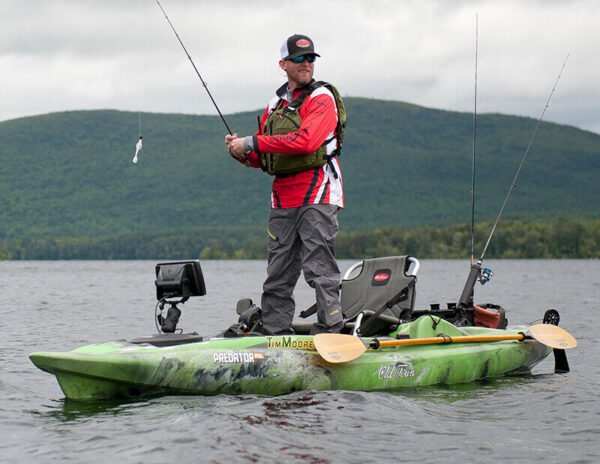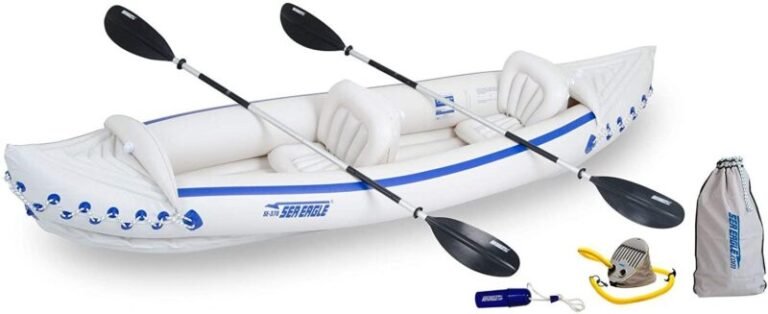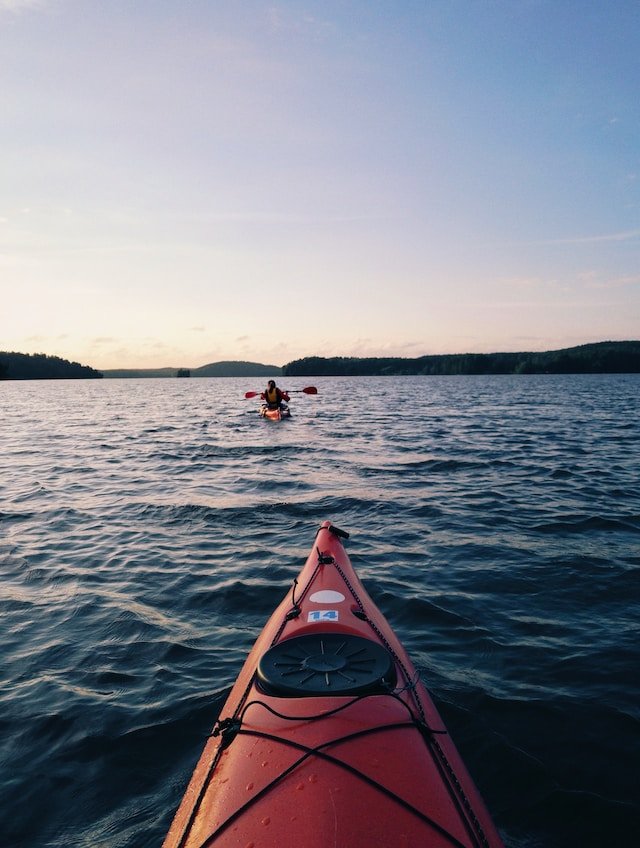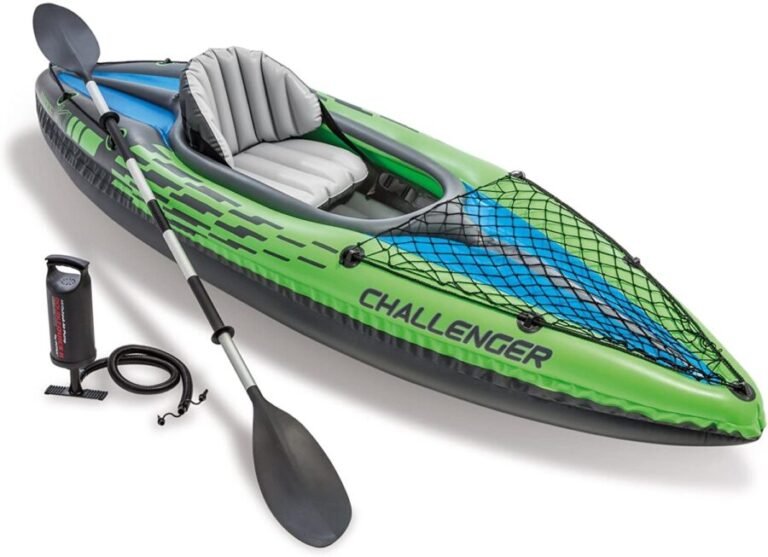How To Tie Down A Kayak In A Truck Bed
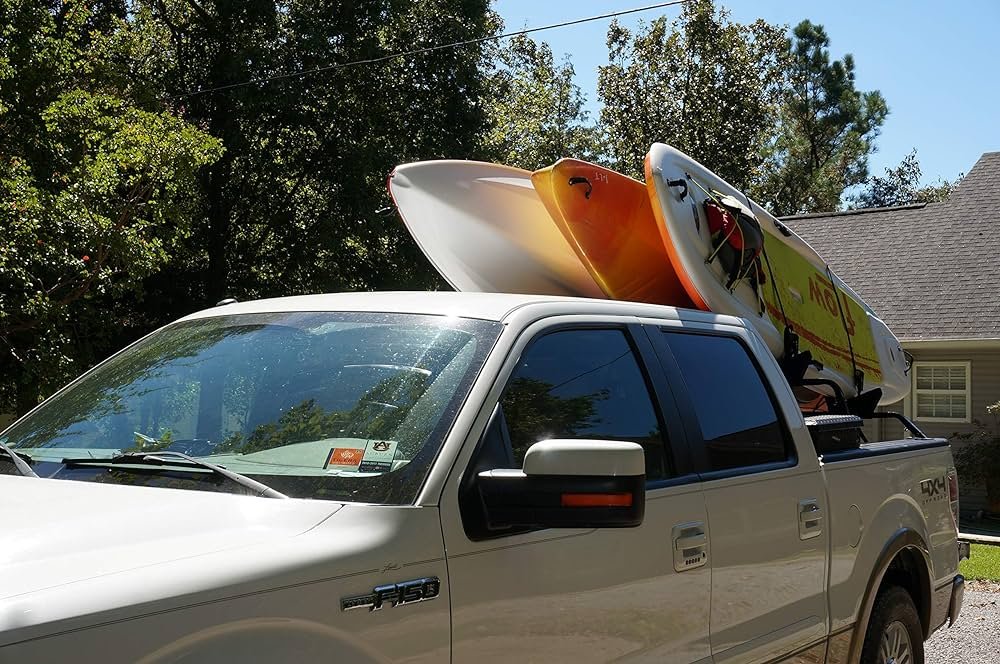
Kayaking is a popular, fun, and thrilling sport enjoyed by people of all ages, many of whom own kayaks, and watercraft propelled by paddles, which are the main equipment of this fun sport and give it its name.
Having a kayak of your own, however, is not without its hassles. You have to maintain them when not in use and transport them to the site for use when required. While kayaks are a great way to get out and explore the outdoors, they can be difficult to transport.
A lot of people choose to transport their kayaks in their cars, but this can be a hassle. Some people choose to use trailer hitches or cargo nets, but these methods are both time-consuming and require some care.
There is also the option of using a tow truck, but this can be expensive and there may be restrictions on where you can tow your kayak. That does not mean that you can’t still transport your kayak with a truck.
Kayaks are not the easiest thing to transport in a truck. They can be cumbersome and take up a lot of space. However, there are ways to make them easier to handle. One way is to use a kayak carrier.
These carriers attach to the inside of the truck and hold the kayaks in place. Another option is to use a roof rack. This will allow you to store the kayaks on top of the truck, which is less cluttered.
There are undeniably several ways to transport a kayak with a truck but many people feel safer transporting their kayaks in the truck bed. In this article, we go through the process of securing your kayak in a truck bed for safe transportation.
Accessories For Tying Down A Kayak
Out of the several possible ways you could transport your kayak, you decided to use a truck. Great.
Choosing a truck means you can procure one and you obviously already have a kayak so what accessories do you need to make this arrangement work and safely transport your kayak to your destination?
- Straps or Bungee Cords: To secure the kayak, you need things to tie it down with and restrict its movement. You can use straps or bungee cords, whichever one is available, and that you know how to use. I recommend straps though as I have a preference for them.
- A Tarp: Protecting your kayak from the elements when it is not in use is important for the kayak to last and that is what you need a tarp for. After securing your kayak to the truck bed, cover it with the tarp to protect it from the elements.
- Lifting Device: If you cannot lift the kayak to the truck bed, you might need a lifting device to help you with that. If you can’t get one, no need to panic. Just ask a neighbor for aid and you will surely get help.
The straps or tie-downs are the most important accessories you will need as they are what will keep your kayak restrained and safe during transit. Be sure to use them well to secure the kayak to the truck bed before transport.
How To Safely Secure A Kayak In The Bed Of A Truck
Kayaks are great for enjoying the outdoors, but they’re not always safe to leave unsecured in the bed of a truck. Here are some tips on how to securely transport your kayak:
- Attach the kayak’s securing straps to the truck’s frame or sheet metal.
- Secure the kayak’s deck to the frame or sheet metal with bungee cords, D-rings, or straps around the truck bed.
- Do not lift the kayak by its deck.
- Secure the kayak’s bow to the truck’s bed with bungee cords or D-rings.
The steps to safely secure a kayak to a truck bed for transportation are enumerated and explained below.
Step 1: Identify The Points Of Attachment On The Kayak And The Truck Bed.
There are a few points of attachment that you’ll need to securely attach your kayak to your truck bed. The first is the kayak’s stern mount, which is the point where the kayak’s bow and stern meet.
The second is the kayak’s bow mount, which is located on the front of the kayak and attaches to the truck bed with a strap.
Other attachment points will be on the body of the kayak. Your kayak may already have these attachment points for the straps. Identify these points on both your kayak and the truck. They allow the kayak to be secured tightly, preventing it from moving around while in transit.
It’s important to make sure these attachment points are secure so that the kayak doesn’t move around and become damaged while you are transporting it.
If either your kayak or truck lacks these attachment points or they are not strong enough you should install or replace them as the situation demands.
Remember that should your kayak fall off while in transit, not only could it get damaged, but it can also cause accidents and attract trouble for you. It is in your best interest to make sure your kayak and truck both have these crucial points and that they are in good condition.
Step 2: Load Your Kayak Into The Truck Bed
After making sure the kayak and truck both have attachment points, the next step is to load your kayak onto the truck bed. You first have to make sure the truck bed is clean and free of anything that could damage your watercraft.
You then lower your truck tailgate and load your kayak onto its truck bed. After loading your kayak, you have to make sure it is positioned in the optimum position to be secured with straps. To achieve this optimum position, align the watercraft’s bow with the tailgate.
You then angle the stern of the kayak into the front left corner of the truck bed to attain the right orientation. If you have a wider truck bed, you might be able to load the kayak without any need for positioning.
Step 3: Attach The Kayak Straps Or Ropes To The Truck Bed.
The next step in securing your kayak is attaching the kayak straps or ropes to the appropriate attachment point. This is a crucial point as the straps are what will keep your kayak from moving during your trip.
The straps should be strong and attached firmly so they can’t be slowly loosened while in transit. While securing the kayak is important, be careful as if you don’t attach the straps to the right place or make them too tight, you may inadvertently damage your kayak.
Attach the straps securely and with moderation. You may want to use locks to secure the straps to their anchor point just to be on the safe side. After doing these things, raise the tailgate.
It will serve as a firewall against your kayak falling off in the improbable scenario that you did not secure it well. If your kayak is quite long, the tailgate will also help raise any overhang of the kayak high enough that it won’t interfere with other vehicles or road users.
If you get a lot of overhangs, tie a flag (preferably color red) to let other road users be aware of the overhang and take necessary precautions to prevent any mishap.
Step 4: Tighten The Straps Or Ropes To Secure The Kayak In Place.
Tightening the straps and double-checking that the kayak is in place cannot be overemphasized. This is even more important if you tied the kayak to the truck bed sometime earlier and are just heading out.
Always confirm that your kayak is secured right before embarking on your journey. You can never be too careful and you may notice some mistakes to correct.
Once you are sure your kayak is firmly secured, you can provide shade for it if you so desire to protect it from the elements on your trip. A tarp can easily be procured and used to protect your kayak from the weather.
Remember that proper maintenance is required if you want the kayak to stand the test of time and keep bringing you fun times on the water.
You can then get your gear and provisions for your kayaking trip. If you are sure all is set, it is finally to hit the road and start your next thrilling kayaking adventure.
Step 5: Check The Tightness Of The Straps Or Ropes Periodically During Transport.
You secure your kayak to the truck bed using ropes or straps and are finally on the road transporting the watercraft to your intended destination.
Checking the tightness of these straps or ropes periodically during transport can help ensure that your kayak is secure and does not move during transport. This step is very important particularly if you are going on a long journey and speeding through it.
Aside from ensuring your kayak is still safely in place with no risk of causing accidents, periodic checks also help you assess the state of things and make sure all is as it should be.
It can also protect your kayak from people who might eye it covetously when they notice you keep a sharp eye on your sports equipment.
Step 6: Arrive At Your Destination And Release The Kayak From The Truck Bed.
Your trip ended successfully and you arrived safely at your destination but things don’t end there. You are finally ready for your next kayaking adventure. Before you can kayak, however, you need to get your kayak out of the truck bed that kept it safe during transit. Here are 7 easy steps to making this happen:
- Open the tailgate of the truck.
- Get into the correct position on your kayak by securing your paddle in the correct location.
- Release the straps that secure your kayak to the truck bed.
- Remove all loose items from the truck bed.
- Move your kayak out of the truck bed and into a dry location.
- Put on your life jacket, get your gear, and get in the water!
- Stay safe and have fun!
Owning your equipment in whatever you do does give you peace of mind and everyone aspires to one day own if they don’t already have the equipment they love to use. This path has led many kayakers to possess kayaks, the equipment they use for the sport that gives them so much fun.
Naturally, with the ownership of a kayak comes responsibility for it, and kayakers often have to clean, store, and move their watercraft from one place to the other. There are several ways to transport a kayak but transporting a kayak in a truck is an especially viable option.
To transport a kayak in a truck, you first have to secure it to the truck’s truck bed. Make sure to measure the kayak and the truck bed to ensure a proper fit, and use a waterproof cover or tarp to protect the kayak from the elements.
Be sure to use plenty of straps to secure the kayak, and make sure the bed is clean and free of debris. Also, be aware of the height of the kayak when loading and unloading it. Once you are sure the kayak is secured, you can drive to your destination.
The trip should be spent driving cautiously, being aware of your surroundings, and performing periodic checks on your kayak and other gear to make sure they are still secure and quickly spot any abnormalities that may arise.
Once at your destination, safely unload the kayak and set your gear in order before hitting the water. While transporting a kayak is no joking task, with a little bit of preparation, transporting a kayak in a truck bed can be an easy process.
Remember to employ safe kayaking practices, be safe, and have fun on the water. Thank you for reading!
Frequently Asked Questions
What is the best way to tie down a kayak?
Kayaking is a great way to get in shape and see some of the beautiful scenery around the world. Several reasons exist why you would want to tie a kayak down and one of them is to keep the watercraft from moving during transport.
There are many ways to tie down a kayak, but the best way depends on the kayaker’s specific needs and preferences. Different kayaks are designed for different uses, and each comes with its own set of rigging requirements.
Some people prefer to use bungee cords or sheeting while others opt for simple knots. It’s important to select a method that is comfortable and secure for you, your kayak, and those around you.
Can a kayak fit in a truck bed?
Kayaks have become popular as fitness equipment and for recreational use. Are you looking for a way to transport your kayak without having to worry about it taking up a lot of space?
Then you may want to consider using a truck bed as your transportation option. Truck beds are typically big enough to fit a kayak, and many models even come with racks that can hold other items.
If you’re not sure if your kayak will fit, give the manufacturer a call or check online for compatibility information. While some kayaks are designed to fit in a truck bed, not all of them are.
There are several factors to consider before deciding if a kayak can fit in the bed of a truck. The kayak’s size and the width of the truck’s bed are all important considerations.
How far can a kayak stick out of a truck bed?
Kayaks are increasingly popular as recreational vessels, and their popularity has led to kayakers searching for more places to store their watercraft. Some kayakers have even gone as far as sticking their kayaks out of the back of pickup trucks.
Can a kayak stick out of the back of a pickup truck bed? The answer is yes, but not without some modifications.
If you want to put a kayak in a truck bed either for transport or storage, then you should know how much you are allowed to have your kayak hanging out of your vehicle.
Your kayak can hang for up to 4 feet out of your truck without any problems. Anything more than that attracts trouble for the trespasser.
How do you load a kayak on a pickup truck?
Kayaks are bulky and difficult to transport. Loading one onto a pickup truck can be a challenge, but there are a few tricks that can make the process easier.
Locate the kayak’s loading deck and fit it between the truck’s rear bumper and frame. Next, lift the kayak onto the loading deck and fit it into position.
Finally, secure the deck with straps or bungees to keep it in place. Another option is to lay the kayak down on its side in the bed of the pickup and then use straps to hold it in place.
Yet another option and perhaps the best is to use a kayak lift system. Once you put the kayak in the truck, you can then secure it with straps.


